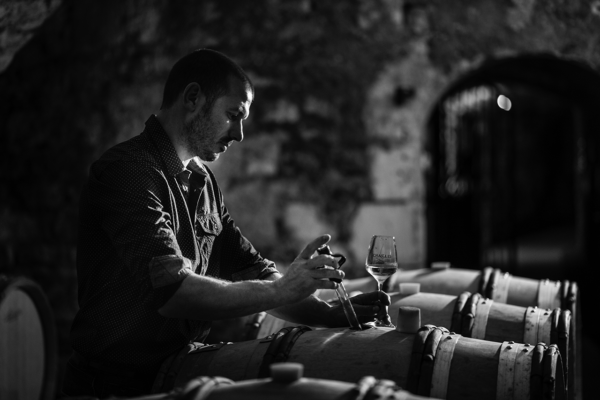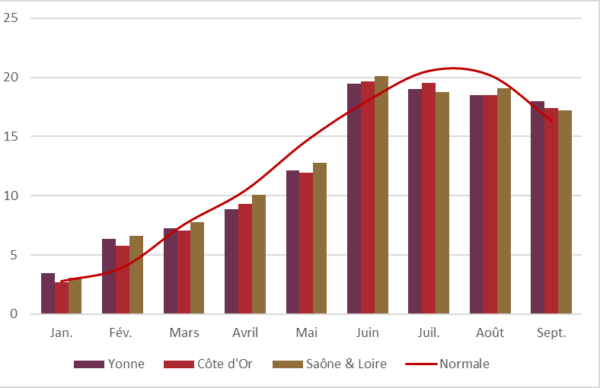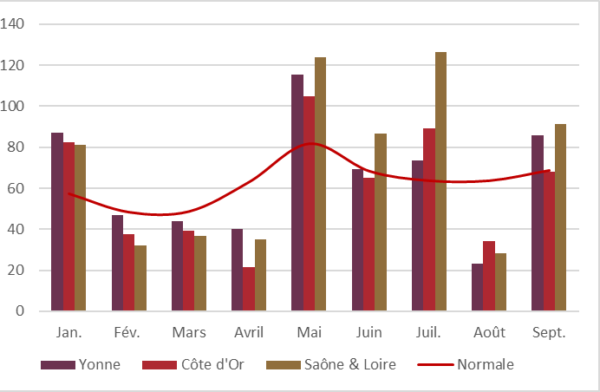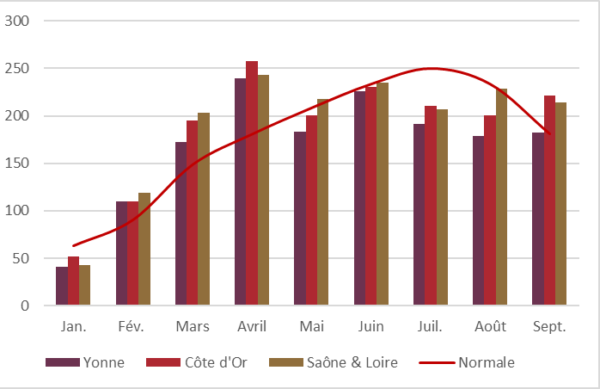

So after the solar, fresh, and balanced 2020 vintage in Chablis, we are met with a throwback vintage that Benoît Droin compares to 2007 if not the vintages more commonly experienced by his father and grandfather. Vintage 2021 is aristocratic, with chewy saline minerality, citric freshness, and a palpable sense of seashells and ancient oceans. Whereas 2020 has plenty of green apples and sweet citrus fruit flavors, with a generous midpalate to balance its minerality, 2021 is adamantly old-school in its tension and inscrutably mineral depths.

Many years ago, I was interviewing a vigneron in the Rhône Valley when I asked about global warming and if he was planning to propagate more heat and drought-tolerant varieties like Mourvèdre. He paused and thoughtfully responded that it wasn’t a question of warmth but climate instability. He was expecting that there would be more freak frosts, storms, hail, heat events, and everything up to frogs.
All random events for which any planning – outside flexibility and hard labor – is utterly useless. All this could be said (and more) of the 2021 vintage in Chablis.

2021 temperatures in ºC for 2021 in Burgundy – a colder than average year.
The year started with a mild winter with plenty of precipitation until the end of March, when it suddenly seemed like summer had arrived in Burgundy. While such early warm temperatures are celebrated in the United States, they are greeted with a sense of dread in rural France. After several days of hot & sunny weather and with plenty of moisture in the soils, the vineyards sprang to life and started to push their buds. Then, a few days after premature summer, it turned into a belated winter, and Chablis suffered ten days of extreme frosts and freezes, with temperatures reaching -8ºC at one point. Benoît Droin tried to save as much as possible but assessed his losses by the end of April to be nearly 70%.
His mood didn’t lift in May as the weather remained cold and rainy as the vines struggled to recover from the devasting frost the month before. By the end of the month, it seemed that there might not be much of a vintage at all.

Look at all that rain! Lots of rain = lots of work.
At the beginning of June and as the vines were about to flower, warm and dry weather finally returned to Chablis. The vines recovered and saw exponential vegetative growth requiring leaf thinning and rigorous canopy management. The fruit set was somewhat better than expected, and Benoît spent much of his time in the vineyard to ensure that the fruit that survived the frost would be as healthy and ripe as possible by the time of harvest.
The temperatures again dropped in July, and the rains returned. The vines responded by increasing the energy they were putting into their canopies, and the threat of mildew necessitated long days in the vineyard. Despite the stress, the grapes gradually ripened, so when the warmth returned in mid-August and lasted through September, the vintage’s promise appeared miraculous. Towards harvest, some late and spotty precipitation increased the threat of mildew, so growers had to remain vigilant.

Sunlight hours were also below average throughout ripening.
Harvest officially commenced on September 20th, and there was a rush to pick as quickly as possible. A very strict selection occurred in the vineyard to remove any traces of rot and the secondary clusters that formed due to the frost. Harvest lasted until the first week of October, with Benoît only experiencing a loss of 50% of his crop. What did arrive at the cellar was concentrated and vivid with acidity that recalled vintages from decades ago. Fermentations went swiftly and without any problems, and the wines were tucked away to age by November.